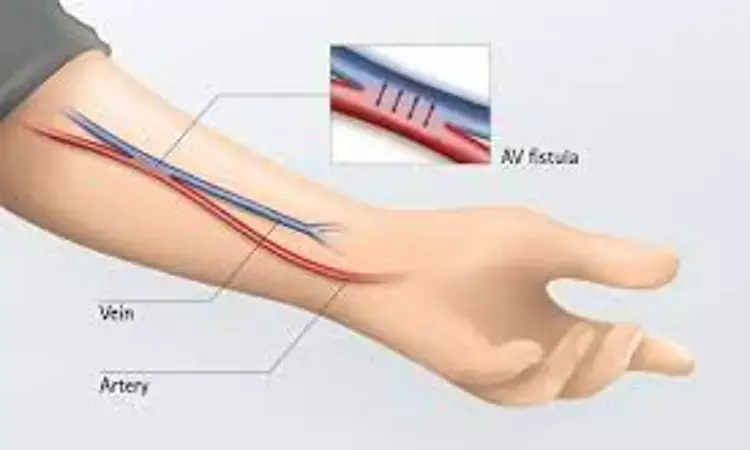- Home
- Medical news & Guidelines
- Anesthesiology
- Cardiology and CTVS
- Critical Care
- Dentistry
- Dermatology
- Diabetes and Endocrinology
- ENT
- Gastroenterology
- Medicine
- Nephrology
- Neurology
- Obstretics-Gynaecology
- Oncology
- Ophthalmology
- Orthopaedics
- Pediatrics-Neonatology
- Psychiatry
- Pulmonology
- Radiology
- Surgery
- Urology
- Laboratory Medicine
- Diet
- Nursing
- Paramedical
- Physiotherapy
- Health news
- Fact Check
- Bone Health Fact Check
- Brain Health Fact Check
- Cancer Related Fact Check
- Child Care Fact Check
- Dental and oral health fact check
- Diabetes and metabolic health fact check
- Diet and Nutrition Fact Check
- Eye and ENT Care Fact Check
- Fitness fact check
- Gut health fact check
- Heart health fact check
- Kidney health fact check
- Medical education fact check
- Men's health fact check
- Respiratory fact check
- Skin and hair care fact check
- Vaccine and Immunization fact check
- Women's health fact check
- AYUSH
- State News
- Andaman and Nicobar Islands
- Andhra Pradesh
- Arunachal Pradesh
- Assam
- Bihar
- Chandigarh
- Chattisgarh
- Dadra and Nagar Haveli
- Daman and Diu
- Delhi
- Goa
- Gujarat
- Haryana
- Himachal Pradesh
- Jammu & Kashmir
- Jharkhand
- Karnataka
- Kerala
- Ladakh
- Lakshadweep
- Madhya Pradesh
- Maharashtra
- Manipur
- Meghalaya
- Mizoram
- Nagaland
- Odisha
- Puducherry
- Punjab
- Rajasthan
- Sikkim
- Tamil Nadu
- Telangana
- Tripura
- Uttar Pradesh
- Uttrakhand
- West Bengal
- Medical Education
- Industry
Elevated Phosphorus tied with Primary Failure of Arteriovenous Fistulas: Study

High serum phosphorus levels may be a risk factor for primary failure of arteriovenous fistulas (AVFs), according to new research published in the Kidney International Reports.
Clinical practice guidelines recommend the arteriovenous fistula (AVF) as the preferred vascular access for hemodialysis. The patency of the arteriovenous access is necessary for effective hemodialysis. However, maintaining the patency of the AVF remains a challenge. Secondary hyperparathyroidism is very common in patients with end-stage chronic kidney disease. The authors determined those independent prognostic factors for the patency of the AVF at the time of its creation.
This is a cross-sectional descriptive study; they included all AVFs performed in our center in the last 2 decades. Demographic variables (age, sex), CKD etiology and associated comorbidity factors were collected. We determine the factors involved in the primary patency of AVFs. The statistical analysis was executed with 25.0 SPSS. The categorical variables are expressed as percentages and were compared using the Chi2 test. The quantitative variables are expressed as mean +/- standard deviation, and the T-student or U Mann Whitney were used to compare them. We establish statistical significance for a value of p <0.05.
Results of the study are as follows:
- They include 622 AVFs performed in 482 patients. 86.8% were autologous. 66.6% were male, with an average age of 65.4 ± 14 years.
- The most frequent CKD etiology were diabetic nephropathy (30.2%), unknown etiology (18%), and glomerular etiology (16.6%). 91.2% had high blood pressure (HBP) and 47.9% diabetes mellitus (DM). 48.7% received antiplatelet therapy and 15.6% anticoagulation prior to the creation of the AVF. 27% presented primary failure.
- The univariate analysis showed statistical significance for qualitative variables including HBP, statin treatment and antiplatelet therapy, and for quantitative variables including fibrinogen, serum phosphorus levels, C-reactive protein, triglycerides, ferritin and age.
- When performing a multivariate analysis using logistic regression, HBP, high serum phosphorus levels and statin treatment are predictors of vascular access thrombosis.
Thus, the researchers concluded that HBP and antiplatelet therapy prior to the creation of the vascular access behave as protective factors for primary failure. Elevated serum phosphorus levels are an independent factor for primary failure of AVFs.
Reference:
Pos-567 mineral bone disease associated with chronic kidney disease. Does it influence in primary permeability after the creation of vascular access for hemodialysis? By P. Castro Fernandez et al published in the Kidney International Reports.
DOI :https://doi.org/10.1016/j.ekir.2021.03.596
Dr. Shravani Dali has completed her BDS from Pravara institute of medical sciences, loni. Following which she extensively worked in the healthcare sector for 2+ years. She has been actively involved in writing blogs in field of health and wellness. Currently she is pursuing her Masters of public health-health administration from Tata institute of social sciences. She can be contacted at editorial@medicaldialogues.in.
Dr Kamal Kant Kohli-MBBS, DTCD- a chest specialist with more than 30 years of practice and a flair for writing clinical articles, Dr Kamal Kant Kohli joined Medical Dialogues as a Chief Editor of Medical News. Besides writing articles, as an editor, he proofreads and verifies all the medical content published on Medical Dialogues including those coming from journals, studies,medical conferences,guidelines etc. Email: drkohli@medicaldialogues.in. Contact no. 011-43720751


